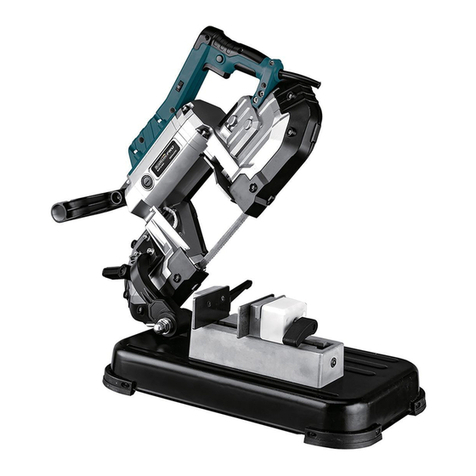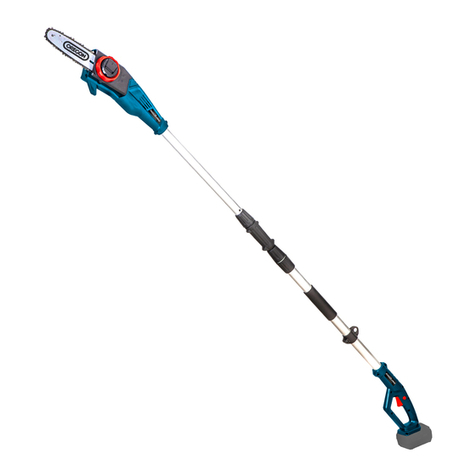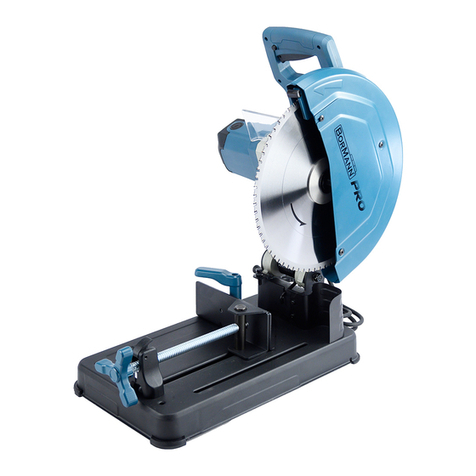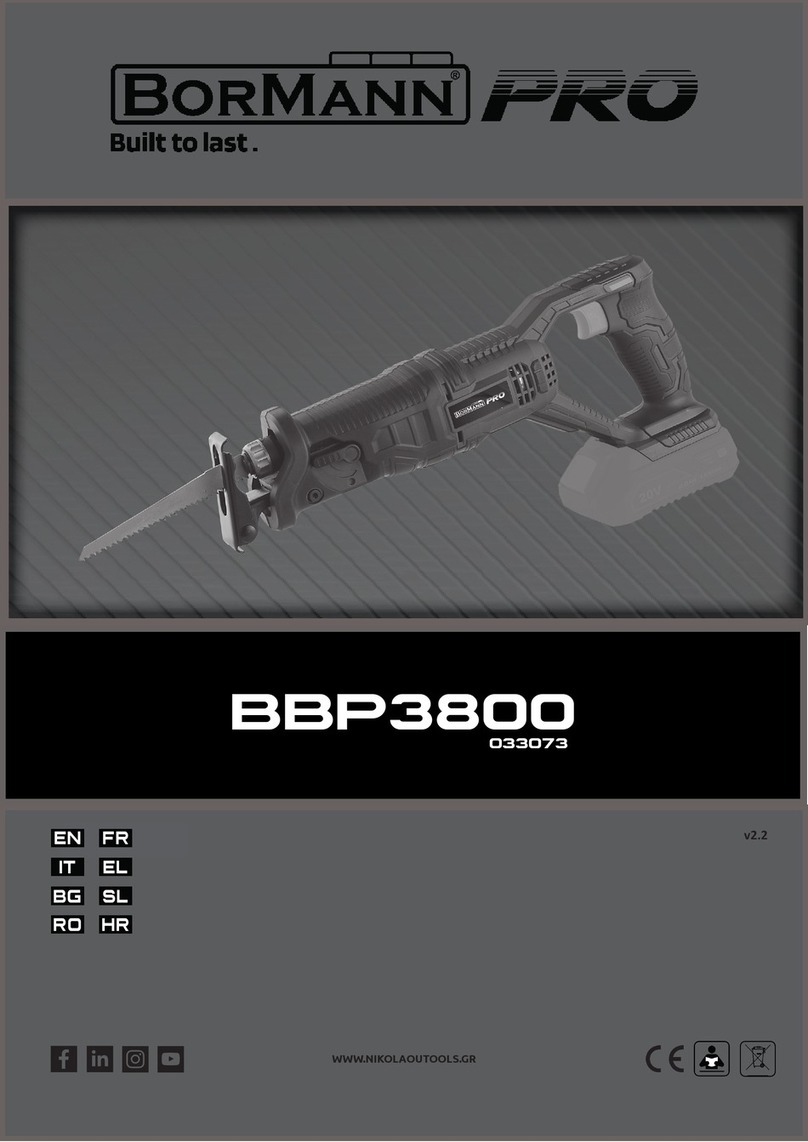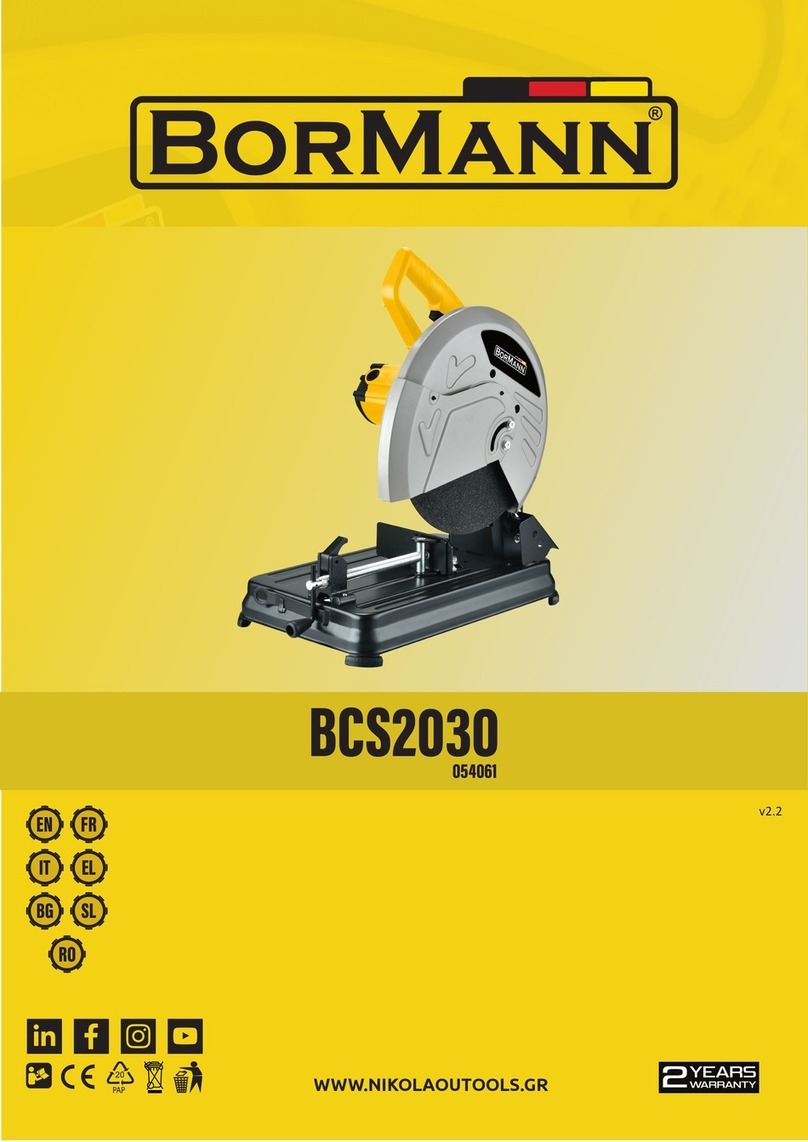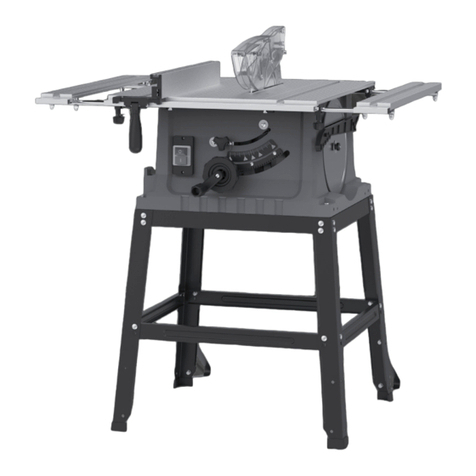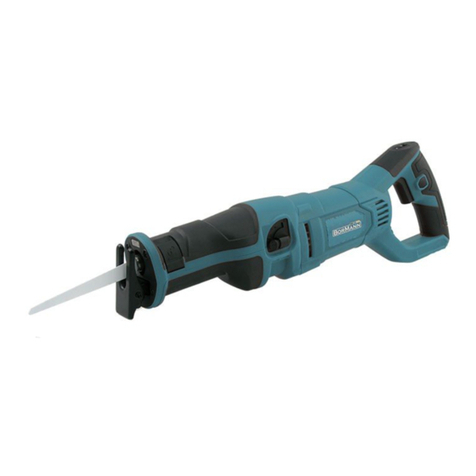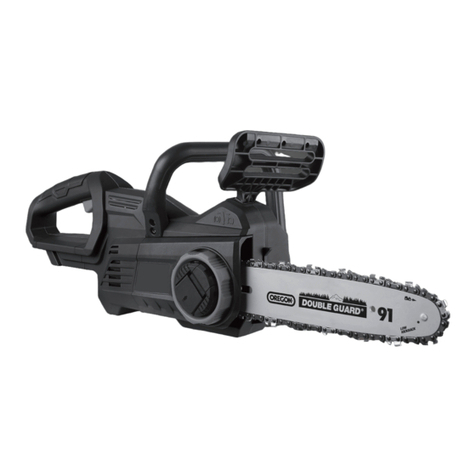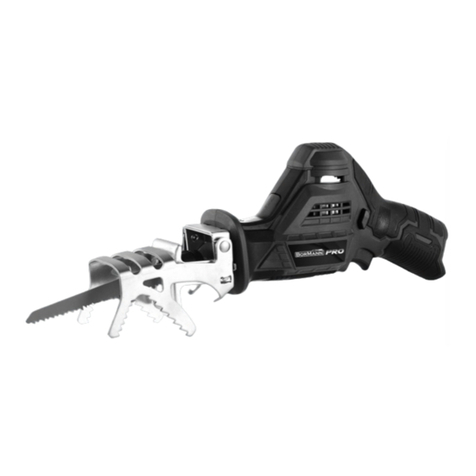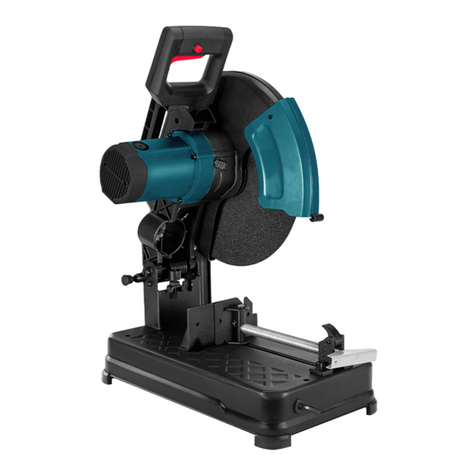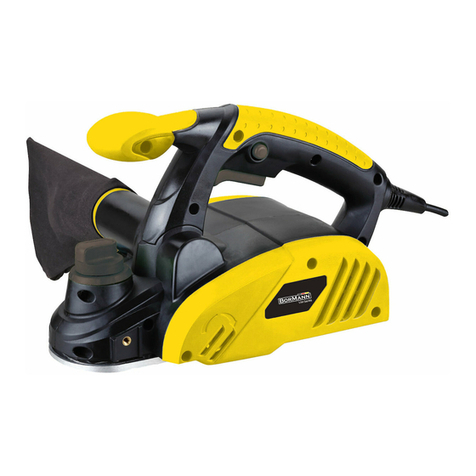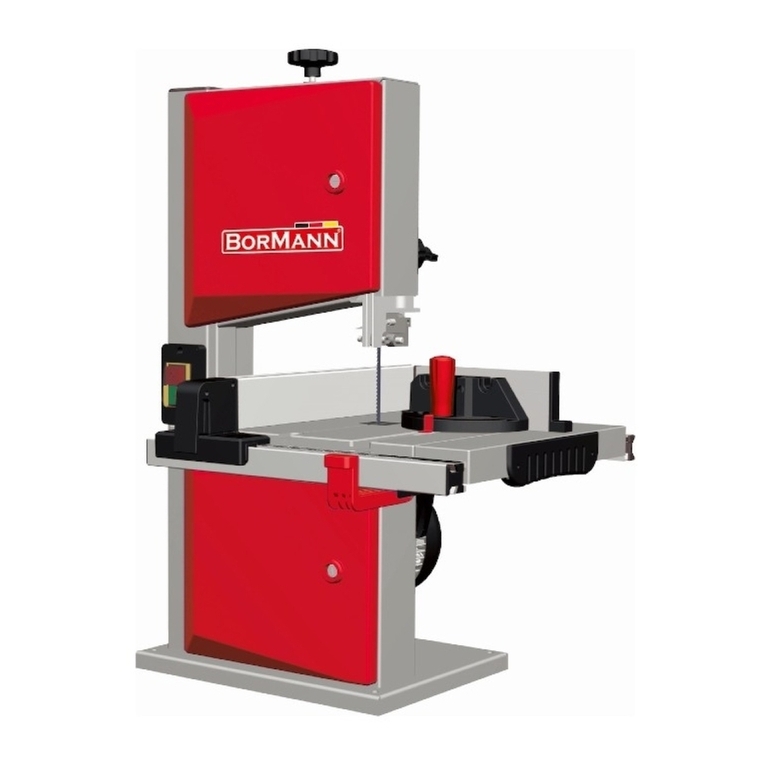
4
www.BormannTools.com
έχει ως αποτέλεσμα την αποτυχία εργαλείου και τραυματισμό χρήστη: Αυτό καλύπτει η
χρήση των αξεσουάρ.
Ντυθείτε σωστά. Τα χαλαρά ρούχα, τα μακριά μαλλιά και τα κοσμήματα είναι όλα
επικίνδυνα επειδή μπορούν να εμπλακούν σε κινούμενα μηχανήματα: Αυτό μπορεί
επίσης να οδηγήσει στο τράνταγμα ενός μέρους του μηχανήματος στο σώμα. Τα ρούχα
θα πρέπει να είναι στενά τοποθετημένα, με τυχόν μακρIά μαλλιά δεμένα πίσω και
οτιδήποτε κοσμήματα και γραβάτες στο λαιμό να αφαιρεθούν. Τα υποδήματα πρέπει
να είναι πλήρως κλειστά και να έχουν μια αντιολισθητική σόλα.
Φοράτε ατομικό προστατευτικό εξοπλισμό. Η σκόνη, ο θόρυβος και οι κραδασμοί
μπορεί να είναι επικίνδυνοι εάν δεν προστατεύονται κατάλληλα. Εάν η εργασία που
αφορά το ηλεκτρικό εργαλείο δημιουργεί σκόνη ή καπνό, φορέστε μάσκα σκόνης. Οι
κραδασμοί στο χέρι, που οφείλονται στη λειτουργία ορισμένων εργαλείων για
μεγαλύτερα χρονικά διαστήματα, πρέπει να προστατεύονται. Φοράτε γάντια μείωσης
των κραδασμών και επιτρέπετε μακρά διαλείμματα μεταξύ των χρήσεων.
Προστατεύστε από τη σκόνη φορώντας εγκεκριμένα προστατευτικά γυαλιά ή μια
ασπίδα προσώπου. Αυτοί είναι μερικοί από τους πιο κοινούς κινδύνους. Προληπτικές
ενέργειες είναι να μάθουμε ποιοι κίνδυνοι συνδέονται με τη διαδικασία μηχανής /
εργασίας και να πρέπει να φοράμε τον πλέον κατάλληλο προστατευτικό εξοπλισμό.
Μην αναπνέετε μολυσμένο αέρα. Αν το έργο δημιουργεί σκόνη ή καπνούς, συνδέστε
το μηχάνημα (αν είναι δυνατόν) σε ένα σύστημα εξαγωγής είτε τοπικά είτε
απομακρυσμένα. Η εργασία σε εξωτερικούς χώρους μπορεί επίσης να βοηθήσει αν
είναι δυνατόν.
Μετακινήστε το μηχάνημα σύμφωνα με τις οδηγίες. Αν το μηχάνημα κρατείται με το
χέρι, μην το μεταφέρετε από το καλώδιο τροφοδοσίας. Εάν το προϊόν είναι βαρύ,
χρησιμοποιήστε ένα δεύτερο ή τρίτο άτομο για να τον μετακινήσετε με ασφάλεια ή να
χρησιμοποιήσετε μια μηχανική συσκευή. Ανατρέξτε πάντα στις οδηγίες για τη σωστή
μέθοδο.
Μην τεντώνεστε. Η επέκταση του σώματός σας πολύ μακριά μπορεί να οδηγήσει σε
απώλεια ισορροπίας και να πέσετε. Αυτό θα μπορούσε να είναι από ύψος ή σε μηχανή
και θα έχει ως αποτέλεσμα τραυματισμό.
Συντηρήστε σωστά τα εργαλεία σας. Ένα καλά συντηρημένο εργαλείο θα κάνει την
εργασία με ασφάλεια. Αντικαταστήστε αμέσως τα εξαρτήματα που έχουν υποστεί ζημιά
ή λείπουν με τα πρωτότυπα εξαρτήματα από τον κατασκευαστή. Κατά περίπτωση,
κρατήστε την λεπίδα αιχμηρή, τα κινούμενα μέρη καθαρά, λιπαρά, χειριστείτε καθαρά
εργαλεία και συσκευές έκτακτης ανάγκης.
Περιμένετε να σταματήσει η μηχανή. Εκτός εάν το μηχάνημα διαθέτει φρένο
ασφαλείας, ορισμένα τμήματα μπορεί να συνεχίσουν να κινούνται λόγω ορμής.
Περιμένετε να σταματήσουν όλα τα εξαρτήματα και στη συνέχεια, αποσυνδέστε το από
την τροφοδοσία ρεύματος προτού πραγματοποιήσετε οποιεσδήποτε ρυθμίσεις,
εργασίες συντήρησης ή απλώς ολοκληρώσετε τη χρήση του εργαλείου.
Αφαιρέστε και ελέγξτε τα εργαλεία ρύθμισης. Ορισμένα μηχανήματα απαιτούν τη
χρήση επιπρόσθετων εργαλείων ή πλήκτρων για τη φόρτωση ή ρύθμιση του ηλεκτρικού
εργαλείου. Πριν από την εκκίνηση του ηλεκτρικού εργαλείου ελέγχετε πάντα για να
βεβαιωθείτε ότι έχουν αφαιρεθεί και ότι βρίσκονται μακριά από το μηχάνημα.


